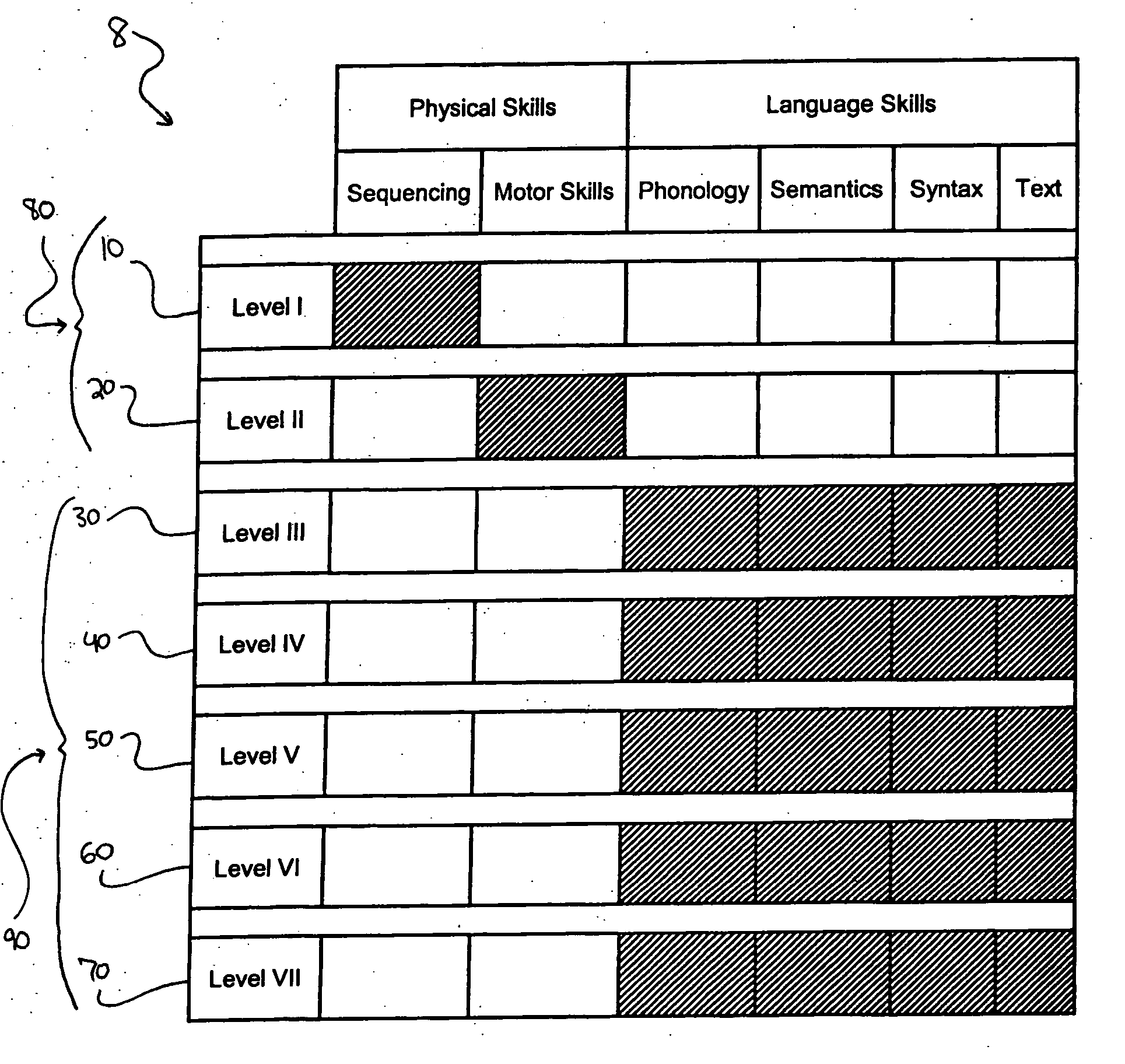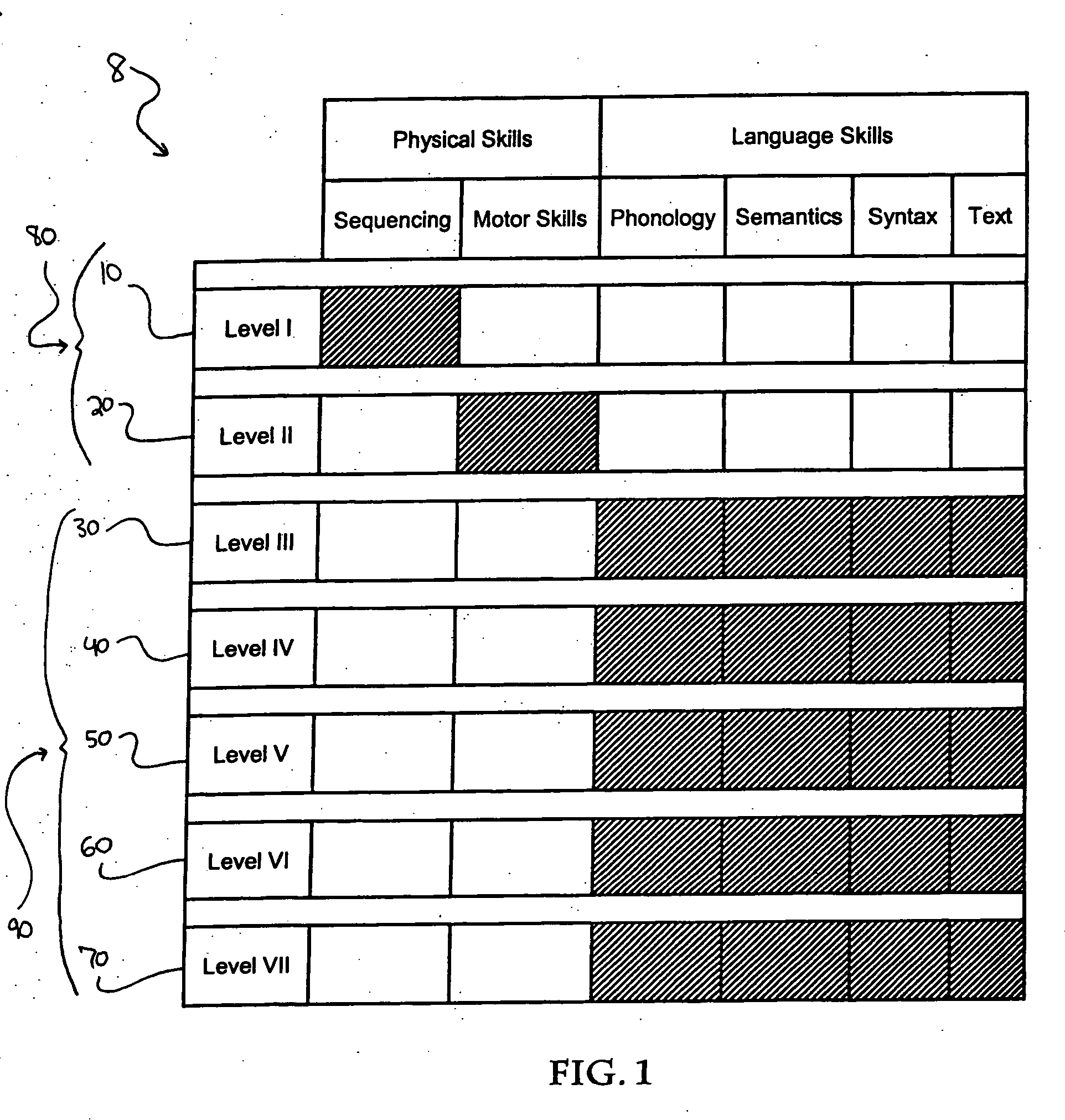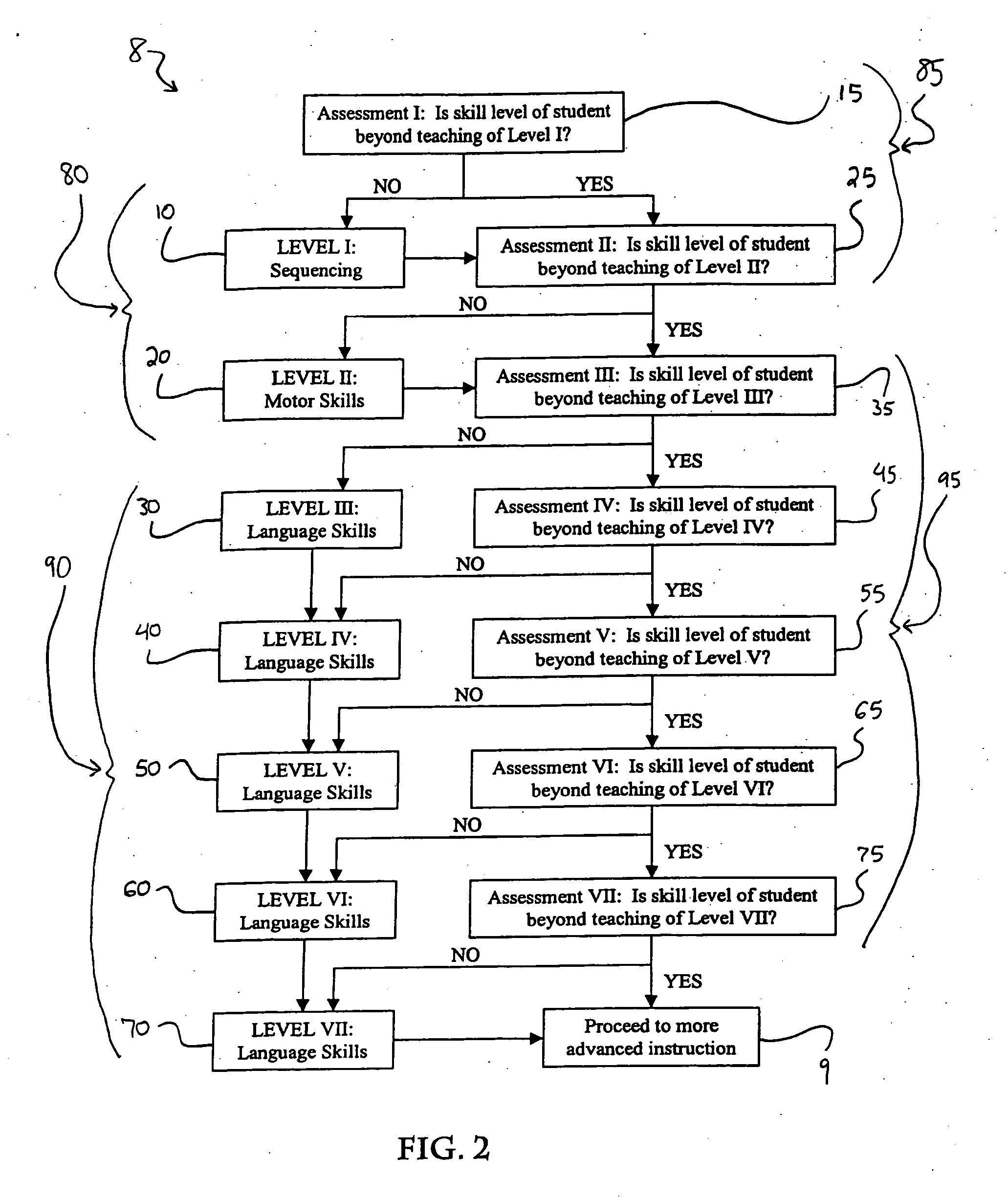Literacy education system for students with autistic spectrum disorders (ASD)
a technology for autistic spectrum disorders and literacy education, applied in the field of literacy education, can solve the problems of serious constrained literacy in the asd population, interfere with a person's ability to communicate with and relate to others, and difficulty in verbal and non-verbal communication
- Summary
- Abstract
- Description
- Claims
- Application Information
AI Technical Summary
Benefits of technology
Problems solved by technology
Method used
Image
Examples
Embodiment Construction
[0037] Language activities, namely commands, declarative sentences and questions, represent the options that an instructor has in getting a student to respond to language. In the most frequent instances, an “instructor” is an adult and the “student” learning is a child. Hereinafter, the terms “teaching person,”“instructor,”“teacher” and “adult” are used interchangeably. Additionally, the terms “individual,”“student” and “child” are used interchangeably. It will be understood that the term “adult” may include instructors of all ages and the term “child” may include individuals of all ages being taught.
[0038] Commands represent actions that the child performs on one or more objects. For example, for the following objects—a bus, a bird, a girl and a plane—the adult might say, at a simple level, “give me the girl” or at a more complex level involving double commands, “shake the bus and turn over the bird.”
[0039] Declarative sentences represent meaningful statements that the adult provi...
PUM
 Login to View More
Login to View More Abstract
Description
Claims
Application Information
 Login to View More
Login to View More - R&D
- Intellectual Property
- Life Sciences
- Materials
- Tech Scout
- Unparalleled Data Quality
- Higher Quality Content
- 60% Fewer Hallucinations
Browse by: Latest US Patents, China's latest patents, Technical Efficacy Thesaurus, Application Domain, Technology Topic, Popular Technical Reports.
© 2025 PatSnap. All rights reserved.Legal|Privacy policy|Modern Slavery Act Transparency Statement|Sitemap|About US| Contact US: help@patsnap.com



